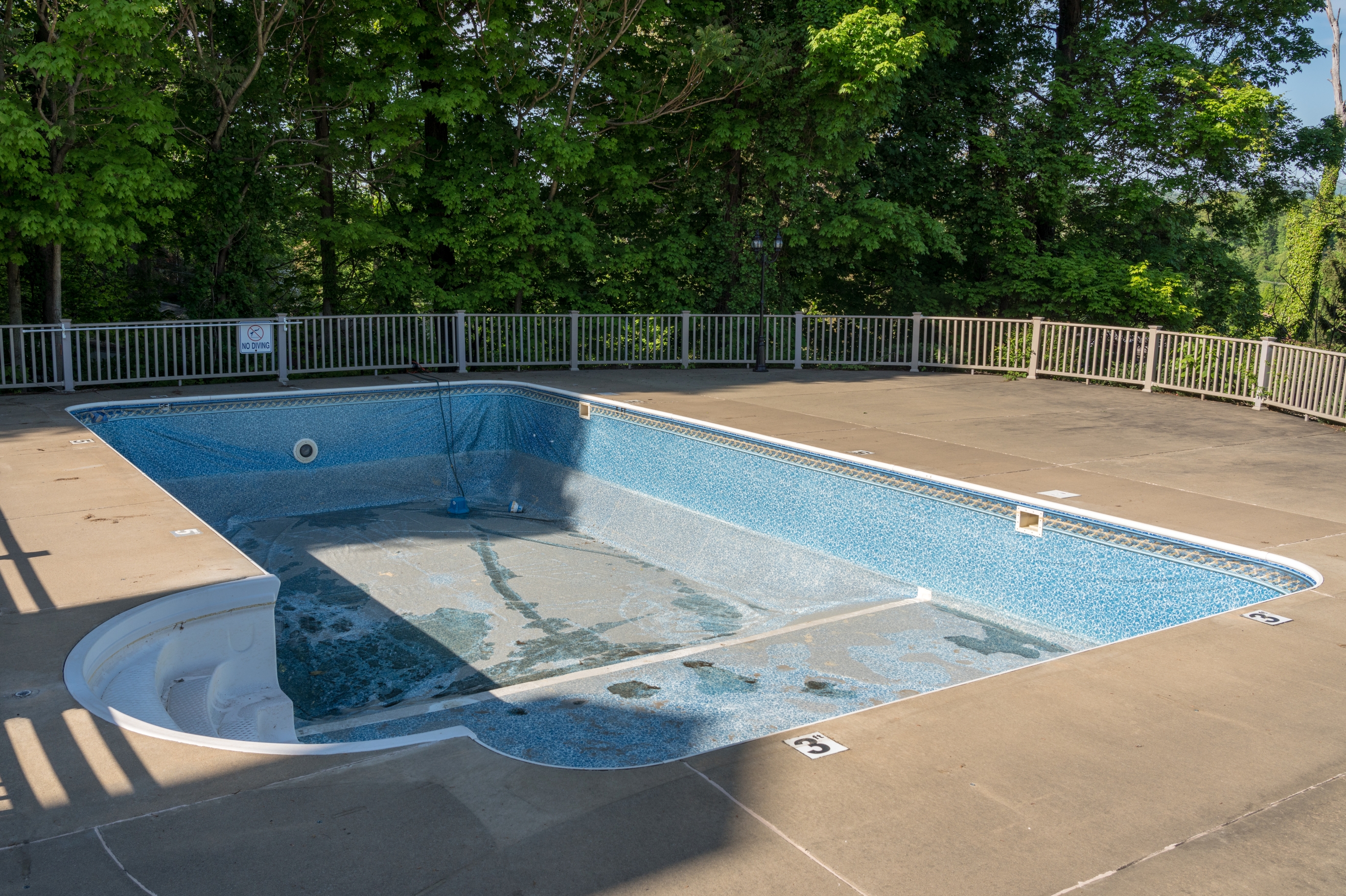How Do I Know It's Time To Change My Pool Liner?

Before Memorial Day is a good time to change your pool liner if you’re noticing that it’s looking a little worn out, torn, or leaking.
The process of replacing a pool liner can generally take between a few days to a few weeks, so replacing it in the spring or fall is always a good idea to stop you from needing to close down your pool in the peak of swimming season.
PoolSupplies.com offers a wide range of pool liners for virtually all above ground and inground sizes, so as soon as you notice your liner needs replacing, we can find you a new option to suit your needs.
Visible Tears and Holes

Perhaps one of the more obvious signs that it’s time to replace your swimming pool’s liner is when you can see visible tears and holes.
Holes are made by sharp objects, general wear and tear, and chemical imbalances in your pool. Even the smallest of tears should be addressed as soon as possible. If you get to them quickly, then it’s manageable and you can use a leak repair kit to fix the issue before the problem gets worse and you need a full liner replacement.
Vinyl pool liners can deteriorate from a combination of the UV radiation from the sun and pool chemicals that keep your pool clean and safe to use. This can cause the pool to become brittle and crack and rip more easily. Even the smallest cracks and rips can cause leaks in the pool, which will cause further issues that we will go over later in the article.
Fading Colors and Discoloration

Some staining or fading is normal as your liner does its job in your pool. UV exposure, chemicals, and general aging can cause the liner to dull. Not only does this make your pool less visually appealing, but it can also indicate that the material is deteriorating as a whole.
As the color in your liner deteriorates, so do the plasticizers in your pool. The plasticizers are what make your liners pliable, so when they deteriorate, they become brittle and more susceptible to breaks and, therefore, leaks.
Wrinkles and Bumps

Wrinkles and bumps can look ugly and also show that the liner is losing its structural integrity. Wrinkles can trap debris and also lead to water issues.
Over time, vinyl liners lose their plasticity and elasticity, as we have already covered in this article. It’s important to keep an eye on your pool liner if you live in an area with groundwater issues. These issues can cause wrinkles to form in the liner, or even pull it out of the track at the top of the pool. This is something that happens after your pool is completely drained and refilled.
If you notice that the liner has begun to slip out of the top track of the pool, then it’s fairly easy to place it back; however, if it’s persistent, then the problem most likely cannot be solved and will only worsen as time passes. In this situation, you will need to get a new liner. Similarly, if you find a rip or tear along the track, these are unable to be fixed and you will also need a new liner.
Water Loss

Although the loss of some water is normal through evaporation, a consistent loss of water can indicate a leak. If you can find the leak, then there’s a chance you can fix it with a leak repair kit. Some leak locating dye can help you find the leak.
To discover the source of water loss, try the bucket test. Fill a bucket with water from your pool and place it gently in a shallow area so the water level in the bucket matches the water level of your pool. Then, monitor the water level of both your pool and the bucket. If your pool leaks, the water level in the pool will go down much quicker than the water level in the bucket. For natural evaporation, the water levels go down at the same rate.
Another possibility is a leak in your pool filter system. Thoroughly check the whole filter system area - including your pool pump, filter, heater, chlorinator, and any O-rings or connections where you might be losing water.
Water loss not only leads to the increased costs of constantly refilling and rebalancing your pool, but it can also cause irreparable damage to your pool itself. An above ground pool leak can cause your yard to flood. Alternatively, it can also cause the earth around your pool to become wet and soft, risking the pool beginning to tilt or sink. If you have an inground pool, a leak can cause water to settle in the earth surrounding your pool, which in turn can cause it to shift, crack, or even collapse.
Age of the Liner

Most vinyl liners have a lifespan of about 6-10 years, depending on how you care for them.
If your pool liner is older than this, it’s a good idea to monitor it more closely to ensure it isn’t cracked or torn, as well as keep an eye on whether your pool is starting to lose water.
Factors That Can Shorten Your Pool Liner's Lifespan
Accidents

Accidents are just those, accidents. But we can minimalize the chance of accidental rips and tears by being careful when placing vacuum cleaners, or setting up accessories such as steps.
Unbalanced pH Levels and Excess Chlorine

Incorrect use of chemicals isn’t just irritating to your skin, but they can lead to premature fading and even degradation of the vinyl.
You should never introduce chlorine directly into the pool because if it comes into contact with the liner before dissolving, it will bleach the material and potentially harm the overall integrity. Instead, dissolve it in a bucket of water outside the pool before adding it, or use a floating chlorinator to evenly disperse the chlorine
If pH is too high, then calcium can form and stick to the liner. This can cause a permanent stain that is very hard, or next to impossible, to remove.
Neglect

You must maintain your pool liner to keep it in top condition. Without regular cleaning or maintenance checks, problems can go unnoticed and therefore worsen with time. If issues are caught fast enough, then it’s possible you can repair your pool; however, if the issue persists, it is likely that you will need a new liner altogether.
Pool liners should be cleaned once a week, and the pool’s chemistry levels should be checked up to three times per week. Your pool should also be shocked every two weeks to prevent the buildup of algae.
Keeping up with regular cleaning and maintenance can help you avoid seemingly small problems (like rips and stains), which will eventually turn into more overwhelming issues (like leaks and stretching).
Completely Draining Your Pool

Completely draining your pool can damage the integrity of the liner, causing it to bow and crack, losing its shape. When refilled, there’s a chance of bubbles and wrinkles. All of these can increase the chances of your liner tearing or shrinking. You should only drain your pool down to one-third empty.

If you’ve discovered that it’s time to replace your liner, for any of the reasons listed above, or if you want a new look for your pool, then we have a wide variety of liners for a number of different sizes of pool, both above ground and inground.
We also have another helpful blog - How To Prepare for a Pool Liner Change, or our Customer Support is available year-round to help with any further questions you may have.






 Pools
Pools Spas
Spas Liners
Liners Equipment
Equipment Covers
Covers Accessories
Accessories Cleaning
Cleaning  Pool Fun
Pool Fun  Clearance
Clearance










